Trad. & Indigenous Medicine
TSAMPA, HIMALAYAN CHILDREN, CEREALS
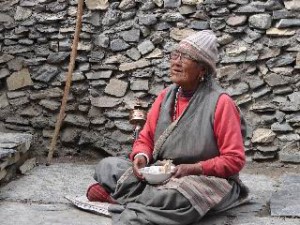
EATING TSAMPA
*Green barley is recognized by science as being the most nutritious of all plant foods, containing a broad spectrum of essential vitamins, minerals and amino acids in high concentrations. In its natural state it also contains important enzymes such as the antioxidant ’superoxide dismutase‘. With this pure food, nature has given us the perfect combination of nutrients. Since I was introduced to green barley I have experienced a whole new level of energy! , (Anm.: Barley is wellknown in Ayurveda aswell…)
Tsampa (Tibetan: རྩམ་པ་; Wylie: rtsam pa) is a Tibetan staple foodstuff, particularly prominent in the central part of the country. It is roasted flour, usually barley flour (Tibetan: ནས་རྩམ་; Wylie: nas rtsam) and sometimes also wheat flour (Tibetan: གྲོ་རྩམ་; Wylie: gro rtsam) or rice flour (Tibetan: འབྲས་རྩམ་; Wylie: bras rtsam). It is usually mixed with the salty Tibetan butter tea (Tibetan: བོད་ཇ་; Wylie: bod cha).
Tsampa is the staple food of Tibetans and often called as the National food of Tibet. It is the end result of organic roasted barley ground into fine and coarse flour. > Tsampa < is a very simple and easy to prepare food widely known as convenience food used at home and also by the travelers in Tibet. It is easy to carry and easy to prepare. Travelers in Tibet always have a pouch of Tsampa tugged to their luggage for an easy and readily available meal.Tsampa mixed with yak butter, dried powdered cheese and tea makes for a refreshing and energetic food. Sportsmen in Tibet consider Tsampa as an energy booster minus the harmful chemicals. Ground roasted barley is easily digestible and is readily absorbable by the body.
Apart form that Tibetans traditionally use Tsampa for various religious rituals and offering purposes.We offer two different kinds of Tsampa for your eating pleasure. Regular Tsampa and Amdo Tsampa. Regular Tsampa is very fine and smooth when made into a cereal. Amdo Tsampa, which is a little coarser, is our specialty item. It has a hearty nutty flavor. Both Tsampa types are heart healthy and energy rich food choices, pure and tasty. We are just a click or a phone call away if you wish to enjoy this wholesome yet healthy Tibetan food.
http://www.abtei-st-hildegard.de
Meet TIBETAN TSAMPA Group and Friends at fb
Traditionelle Abendländische Medizin
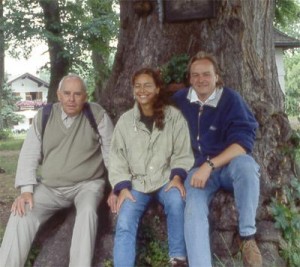
> NATURA NATURANS – ARBEITSGEMEINSCHAFT <
für tradtionelle abendländische Medizin
Das ist kein Arzt, der das Unsichtbare nicht weiß, das keinen Namen trägt, keine Materie hat und doch seine Wirkung. Nicht der Corpus ist die Arznei, das wahre Arkanum ist unsichtbar.“ – Paracelsus, 1493 bis 1541.
Natura naturans is a Latin term coined during the Middle Ages, mainly used by Baruch Spinoza meaning „Nature naturing“, or more loosely, „nature doing what nature does“.
The Latin, naturans, is the present participle of natura, indicated by the suffix „-ans“ which is akin to the English suffix „-ing.“ naturata, is the past participle.
The term describes an active, alive, and changing God that at the same time does not lose its reality. Samuel Taylor Coleridge defined it as „Nature in the active sense“ as opposed to natura naturata. To Spinoza, Nature and God were the same, as humans were living modifications to both. (See:Spinoza’s God and Nature). In contrast, Spinoza uses the term natura naturata (nature natured) to indicate a passive God in which things have already been created, and modifications are secondary to the unchangeable identity of things.
Die Arbeitsgemeinschaft für Traditionelle Abendländische Medizin, Natura Naturans, wurde 1993 von Max Amann, Margret Madejsky und Olaf Rippe gegründet. Die Arbeitsgemeinschaft ist konfessionell ungebunden und fühlt sich dem Gedankengut einer Heilkunst nach Paracelsus verpflichtet. Das besondere Anliegen ist das Erforschen und Bewahren alten Wissens sowie die Integration des überlieferten Erfahrungsschatzes in die heutige Heilkunde.
Der lange Erkenntnisweg der Menschheit hat im Abendland zum zeitgenössischen materialistischen Weltbild geführt. Die wissenschaftlichen Systeme dieses Weltbildes gewinnen ihre Kenntnisse aus der Analyse des Stofflichen. Ihre Ursprünge liegen in den jahrtausendealten Lehren der Eingeweihten.
Anders als heutige Naturforscher haben die Eingeweihten immer das Geistartige in allem berücksichtigt. Ihre Erkenntnisse beruhen auf den Lehrsätzen des Hermes Trismegistos. Ihr Bestreben ist es, das Geistartige in der Materie zu erkennen, es freizusetzen und somit nutzbar zu machen. Dieses Wissen läßt nicht nur das Wesen der Natur erkennen, sondern auch die Ursachen von Krankheiten, die Natur der Heilmittel und geeignete Wege zu einer Heilung. Somit hat der Einzelne auch die Möglichkeit zur Gestaltung seines Lebens im Einklang mit der Natur.
Weil sich die Wissenschaften aber von ihren Ursprüngen trennten – Chemie von Alchimie, Physik von Metaphysik, Astronomie von Astrologie, Psychologie von Magie – sind sie für die Menschheit in ihrer einseitigen Betrachtungsweise zu einer ernstzunehmenden Bedrohung geworden.
Es ist daher notwendig, diese einmal geschaffene Trennung wieder aufzuheben.
Indem moderne Kenntnisse mit dem Wissen der Eingeweihten in Einklang gebracht werden, lassen sich neue wesentliche Erkenntnisse für eine menschengerechte und vom Dogma befreite Heilkunde finden.
Dies zu vermitteln und die Sinne für das Wesentliche zu schärfen, ist das Anliegen der Arbeitsgemeinschaft Natura Naturans.
ARGAN TREE – Argan Oil

> UNESCO BIOSPHERE RESERVE INFORMATION <
The Argan (Argania spinosa, syn. A. sideroxylon Roem. & Schult.) is a species of tree endemic to the calcareous semi-desert Sous valley of southwestern Morocco and to the Algerian region of Tindouf in the western Mediterranean region. It is the sole species in the genus Argania.
Argan grows to 8-10 metres high, and live to 150-200 years old. They are thorny, with gnarled trunks. The leaves are small, 2-4 cm long, oval with a rounded apex. The flowers are small, with five pale yellow-green petals; flowering is in April. The fruit is 2-4 cm long and 1.5-3 cm broad, with a thick, bitter peel surrounding a sweet-smelling but unpleasantly flavoured layer of pulpy pericarp. This surrounds the very hard nut, which contains one (occasionally two or three) small, oil-rich seeds. The fruit takes over a year to mature, ripening in June to July of the following year.
The arganeraie forests now cover some 8,280 km² and are designated as a UNESCO Biosphere reserve. Their area has shrunk by about 50% over the last 100 years, owing to charcoal-making, grazing, and increasingly intensive cultivation. The best hope for the conservation of the trees may lie in the recent development of a thriving export market for argan oil as a high-value product.
THE ARGAN tree (argania spinosa) is perfect for a harsh environment, surviving heat, drought and poor soil.
It is little known outside Morocco, and many Moroccans themselves have never heard of it because it grows only in the south-west of the country – roughly between Essaouira and Agadir, in an area covering 700,000-800,000 hectares. But within the area where the argan grows there are about 21 million trees which play a vital role in the food chain and the environment, though their numbers are declining.
The tree, which is thorny and can reach heights of 8-10 metres, probably originated in Argana, a village north-east of Agadir (off Route 40). It lives longer than the olive and requires no cultivation.
The trunk of the argan is often twisted and gnarled, allowing goats to clamber along its branches and feed on the leaves and fruit.
The fruit has a green, fleshy exterior like an olive, but larger and rounder. Inside, there is a nut with an extremely hard shell, which in turn contains one, two or three almond-shaped kernels.
When goats eat the fruit, the fleshy part is digested but the nut remains. Later, the nuts are collected by farmers to produce oil.
The production of argan oil, which is still mostly done by traditional methods, is a lengthy process. Each nut has to be cracked open to remove the kernels, and it is said that producing one litre of oil takes 20 hours‘ work.
Argan oil is slightly darker than olive oil, with a reddish tinge. It can be used for cooking and is claimed to have various medicinal properties, such as lowering cholesterol levels, stimulating circulation and strengthening the body’s natural defences. Internationally, there is some interest in its possible cosmetic uses.
The residue from the kernels after oil extraction is a thick chocolate-coloured paste called „amlou“ which is sweetened and served as a dip for bread at breakfast time in Berber households. It flavour is similar to that of peanut butter.
The wood and nut-shells of the argan tree are burned for cooking; the wood is also used decoratively in some of the inlaid boxes which are made in Essaouira. The roots of the argan tree grow deep in search of water, helping to bind the soil and prevent erosion.
Households that make their own argan oil tend to use if for general cooking. Because it is expensive to buy, others may use it more sparingly – flavouring salads, for example. A few drops stirred into couscous just before serving give it a rich, nutty aroma.
Argan production is still basically a cottage industry, managed largely by women. But many people believe that if the oil became better known it could provide more employment in the region as well as enhancing the environment.
Bottles of what pass for argan oil are sold along the roadsides between Essouira and Agadir, but is difficult to tell if they are genuine. Because the oil commands a high price, sellers are often tempted to dilute it with cheaper oils. Some bottles simply contain olive oil, coloured with paprika or other substances.
THE BERBER PEOPLE
Berbers are the indigenous peoples of North Africa west of the Nile Valley. They are discontinuously distributed from the Atlantic to the Siwa oasis, in Egypt, and from the Mediterranean to the Niger River. Historically they spoke various Berber languages, which together form a branch of the Afro-Asiatic language family. Today many of them speak Arabic and also French in the Maghreb , due to the French colonization of the Maghreb. Today most Berber-speaking people live in Algeria and Morocco, becoming generally scarcer eastward through the rest of the Maghreb and beyond. The largest number of Berbers is found in Morocco, accounting for about 85% of its population. Read more: >here<
> Meet ARGAN Friends, Groups and Oil at facebook <
> Meet Berber Groups, Arts and Friends at facebook <
> Meet Indegenous Groups, Friends, Medicine at facebook <
> Meet Biosphere, Groups, Arts, Friends….Interests…at facebook <
THE VEDAS AND ANCIENT EGYPT
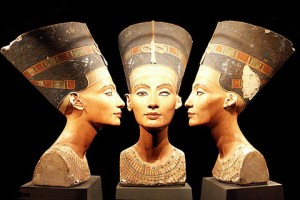
> THE INVOCATION OF THE GODDESS <
THE VEDAS AND ANCIENT EGYPT
By David Frawley
First published in the Hindu, one of India’s main national newspapers.
The Vedas as the Pyramids of the Mind
The Vedas represent a monumental spiritual literature, by far the largest that remains from the ancient world. We could therefore call the Vedas, `the pyramids of the ancient mind‘. The > Vedas < are the oldest record of the great dharmic traditions of the East, with not only the Hindu but also Buddhist, Jain, Sikh and Zoroastrian traditions part of the same greater stream of spiritual striving. Apart from the Biblical tradition, this dharmic or Indic tradition is one of the two dominant streams of world spirituality that has endured throughout the centuries and remains vital to the present day, as the global popularity of Yoga, Vedanta and Buddhism clearly reveals.
If we look at the Vedic tradition, we see that it was based upon an ancient priestly order that was extensive and sophisticated, comparable to the priestly orders of ancient Egypt or Babylonia. This priestly order was concerned not merely with rituals but also with spirituality, yoga, philosophy, medicine, astronomy and architecture that form the basis of the various Upavedas and Vedangas.
This spiritual culture of ancient India can easily be compared with that of ancient Egypt, which was similarly guided by extensive priestly orders, their sophisticated rituals and an emphasis of mysticism and magic. As ancient Egypt was arguably the spiritual center of the West in the ancient world, so India can be said to be the spiritual center of the ancient East.
> Meet Egypt Groups and Friends at facbook <
San Damiano Foundation & Village to Village
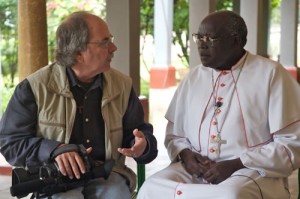
St. Francis of Assisi St. Claire of Assisi
St. Clare had a way of expressing the transforming power of contemplative prayer: “ Place your mind before the mirror of eternity! Place your soul in the brilliance of glory! And transform your entire being into the image of the Godhead Itself through contemplation”. – Pastor’s Message from St Clare of Assisi Catholic Parish
Mission Statement – The mission of The San Damiano Foundation is to communicate through films the spirituality of St. Francis and St. Clare of Assisi. The church of San Damiano in Assisi, Italy, is the birthplace of the Franciscan movement. In that small, dilapidated church, St. Francis heard the voice of Christ speak to him from a painted Byzantine cross telling him to rebuild the Church. It was a moment of transformation for the future saint. The San Damiano Foundation desires to help inspire similar transformation within individuals, within the Church and within our society.
The San Damiano Foundation recognizes the power of film to touch and inspire people, making it a perfect medium to communicate Franciscan spirituality and concern for the poor, social justice, peace and nonviolence.
The films produced by the Foundation will explore the active and contemplative dimensions of Franciscan spirituality. They will either illustrate St. Francis’ love of the poor by showcasing the work Franciscans and other Christians are doing with the poor around the world or enter the heart of contemplative prayer as embodied by St. Clare. Some films will be produced for broadcast on public and commercial television stations; some will be geared for distribution to churches and schools.
The San Damiano Foundation recognizes the power of film to touch and inspire people, making it a perfect medium to communicate Franciscan spirituality and concern for the poor, social justice, peace and nonviolence. The vision for our films is twofold: to raise funds for Christian charities aiding the world’s poor, and to awaken the hearts and minds to the plight of the poor,hopefully inspiring viewers to serve those in need through acts of compassion and mercy.
Africa’s Medicine: – The healing methods and medicine developed in Africa differs in many aspects from western medicine. Western medicine is technically and analytically based, while the traditional African medicine takes a holistic approach.
It is believed that good health, disease, success or misfortune are not chance occurrences but arise from the actions of individuals and ancestral spirits according to the balance or imbalance between the individual and the social environment.
Traditionally, every rural African community would have a traditional medical practitioner, to which they would go for advice on a number of issues, including health-problems. These traditional “doctors” have an invaluable botanical knowledge of plant species and their ecology and scarcity.
The community would rely upon this knowledge, as well as the spiritual and practical skills of the traditional healer, since they themselves were not allowed to gain this knowledge.
This is because throughout Africa the gathering of medicinal plants was traditionally restricted to traditional healers or their trainees through spiritual calling, ritual, religious controls and, in Southern Africa, the use of alternative (hlonipha) names not known to outsiders.
Traditional healers use plants in a variety of ways, depending on the illness to be cured. Parts of plants can be applied directly to wounds and cuts or, if necessary, prepared as powders that are used like snuff. Sometimes plants are even used in the form of smoke or fumes, or as infusions.
Village2Village Project Mission – To provide comprehensive, empowering, respectful and compassionate care for vulnerable children and their families, one life at a time.
Our Priority: Children who have at least one parent affected by HIV/AIDS or violence, and their families.
Our Location: Serere, Uganda; a county of rural villages in Soroti district, in the Teso region of northeastern Uganda. In time we may expand to serve those in need in a variety of locations both inside and outside of Uganda.
> Meet the Groups and friends of Africa in facebook <
> Meet San Damiano Foundation, friends at facebook <
> Meet Village2Village, friends at facebook <
AFRICA´s MEDICINE
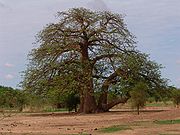
THE HEALING METHODS OF AFRICA´s MEDICINE
The healing methods and medicine developed in Africa differs in many aspects from western medicine. Western medicine is technically and analytically based, while the traditional African medicine takes a holistic approach.
It is believed that good health, disease, success or misfortune are not chance occurrences but arise from the actions of individuals and ancestral spirits according to the balance or imbalance between the individual and the social environment.
Traditionally, every rural African community would have a traditional medical practitioner, to which they would go for advice on a number of issues, including health-problems. These traditional “doctors” have an invaluable botanical knowledge of plant species and their ecology and scarcity.
The community would rely upon this knowledge, as well as the spiritual and practical skills of the traditional healer, since they themselves were not allowed to gain this knowledge.
NOURISHING BOTANICALS: www.nourishingbotanicals.com
- is filled with the bounties of the earth and the simple things many take for granted.
- is open to working with like minded professionals and communities to help resolve health disparities that we face globally.
- calls you to live your life fully with plant medicine under the guidance of a professionally trained practioner to provide health support for healing and wellbeing.
- specializes in green conciousness: herbal medicine, nutrition, wellness counseling, education and workshops, as well as, custom tailored formulations from our growing apothecary.